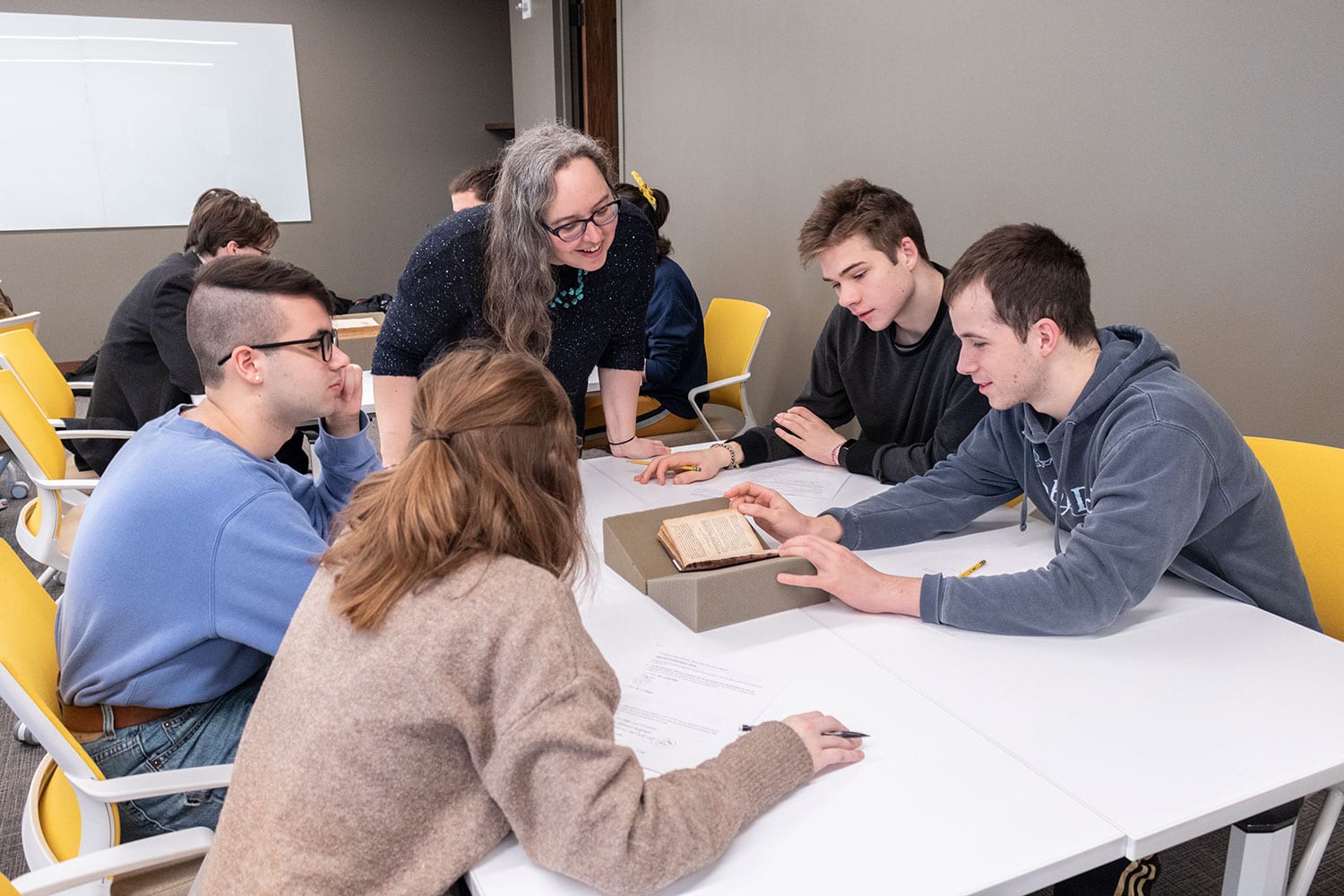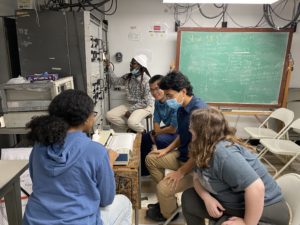Course Title: “Advanced Topics: Observational Astronomy”
Taught By: Professor of Physics and Astronomy and Director of the Marian E. Koshland Integrated Natural Sciences Center Karen Masters
Says Masters:
This class is an upper-level astrophysics class focused on how we use observations of the night skies to learn about the astrophysics of the Universe. I hope students take away from it an understanding of the process of collecting, analyzing, and understanding astronomical data for use in scientific research. This includes learning how to do fairly traditional optical imaging of the skies using our on-campus 16″ telescope, which has a CCD camera and various filters so it can be used to make nice three-color images. The class also covers observations in different parts of the electromagnetic spectrum—especially radio astronomy—and an introduction to the use of the techniques of “data mining” to use the vast quantities of open source astronomical data now available to anyone via the internet.
This has been a core class in the astrophysics/astronomy majors since before I was at Haverford. It’s the main class that makes use of our beautiful Strawbridge Observatory facility on campus (although other astronomy classes, and the Public Observing student group also make use of it), although the class keeps being updated to be modernized to reflect the realities of observational astrophysics at the current time.
In some ways this is a pretty typical upper-level laboratory class. The class is quite student-inquiry driven, and requires a lot of project work, as well as working in observing teams to get data. What is unusual is the timing of the practical parts of labs, since it needs to be dark to do optical astronomy, students have to plan to work at nights at least several times a semester.
In addition, this class has, for a long time, had some kind of trip to a professional astronomical observatory, funded with support from the Boughn-Gollub-Partridge Fund for Faculty-Student Research in Astronomy and Physics, which was initially founded to support travel to national observatories. By training I’m a radio astronomer and I make use of a telescope—the Green Bank Telescope, or GBT—at the Green Bank Observatory in West Virginia for a lot of my own research. So, for the three times I have taught this class so far, including this fall, I organized a class trip to Green Bank, which is about a six-to-seven-hour drive away. During the height of the pandemic this was a virtual visit only, but they are back open for in-person visits, so we were able to go in September.
The observatory runs a “Radio Astronomer for a Day” overnight education experience, where, for the length of our visit we have access to a very hands-on, 40-foot radio telescope. Students are taught to use this telescope, which collects data using a chart recorder! We stayed at the observatory overnight for two nights, and the 15 students who came all observed something with the 40-foot, as well as getting to see the rest of the telescopes on site, including a tour of the control room for the GBT. We also got a beautiful view of dark skies – so many more stars than we can see here so near to Philly. Many students saw the Milky Way for the first time, and we also got to enjoy several shooting stars (meteorites).
Learn more about other courses offered by the Department of Physics and Astronomy.



